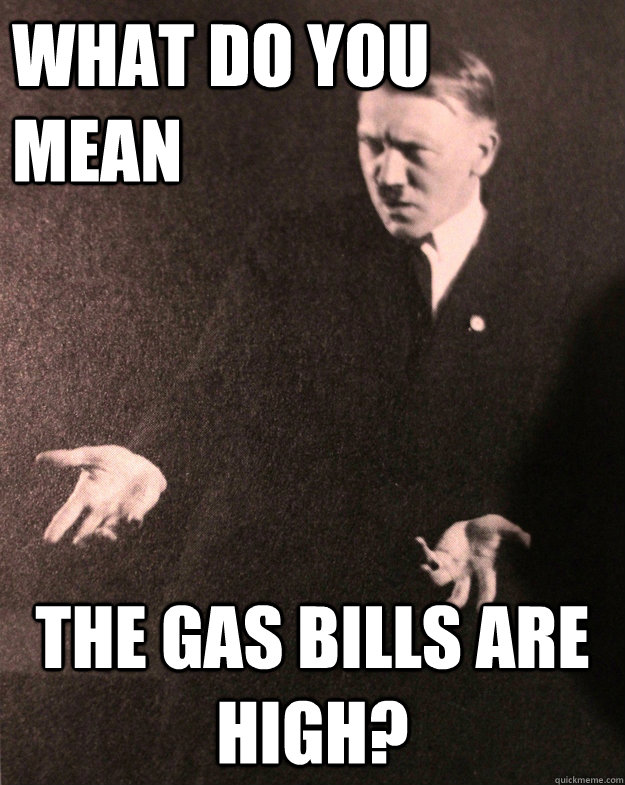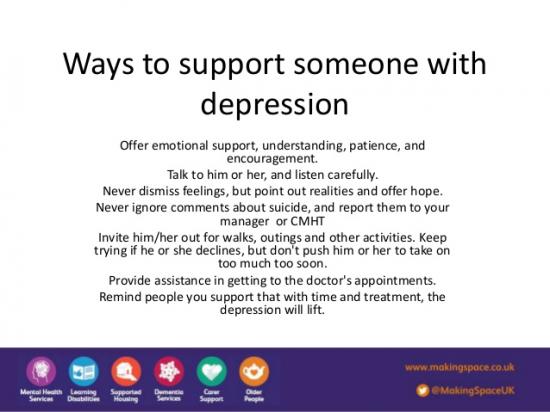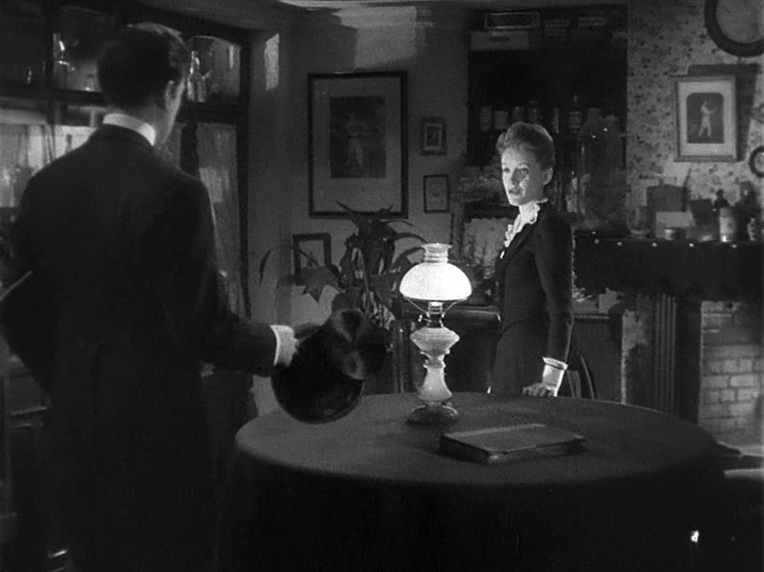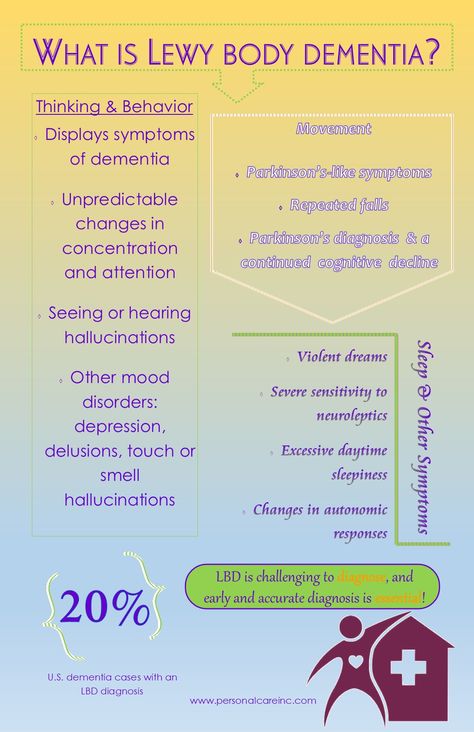Talking about alcoholism
Reaching Out, Connecting & Offering Help
If your loved one is struggling with alcohol use, it can be challenging to figure out how to help them. By educating yourself on alcohol use disorders, considering different ways of how to talk to your loved one, and making a plan for your conversation, you’ll be better equipped to lend your support and get your loved one the help they need.
This article will help you understand alcohol use disorders, how to approach someone you think may have a drinking problem, how to offer them assistance, and how to take care of yourself during this process.
Remember: it may take more than one conversation with a person who has an alcohol use disorder to encourage them to seek help. However, by showing your support and concern, you may be able to help them to see they have a problem with alcohol and would benefit from addiction treatment.
About Alcohol Abuse and Alcohol Use Disorders
Drinking becomes problematic when it affects a person’s life to the point where they can no longer control their alcohol use. They continue to drink despite negative impacts it has on their life. When someone’s drinking progresses to this extent, a person may have an alcohol use disorder.1
An alcohol use disorder (AUD) is a chronic, but treatable condition that can develop in association with certain cognitive changes and physiological adaptations that can make it additionally difficult for a person to stop drinking – even if they want to.
Consuming more than one drink a day (equivalent to a 12-ounce beer) for women and two drinks a day for men may be considered unhealthy.2 Remember, only a physician can diagnose someone with an AUD. However, being aware of the signs of an AUD can help you prepare for your conversation with the person you suspect has a problem with drinking alcohol. To learn more about addiction, how it manifests, and its effects on society, view our addiction statistics page.
Recognizing Alcoholism
You may notice certain physical changes in a loved one that could indicate that they have a problem with alcohol use.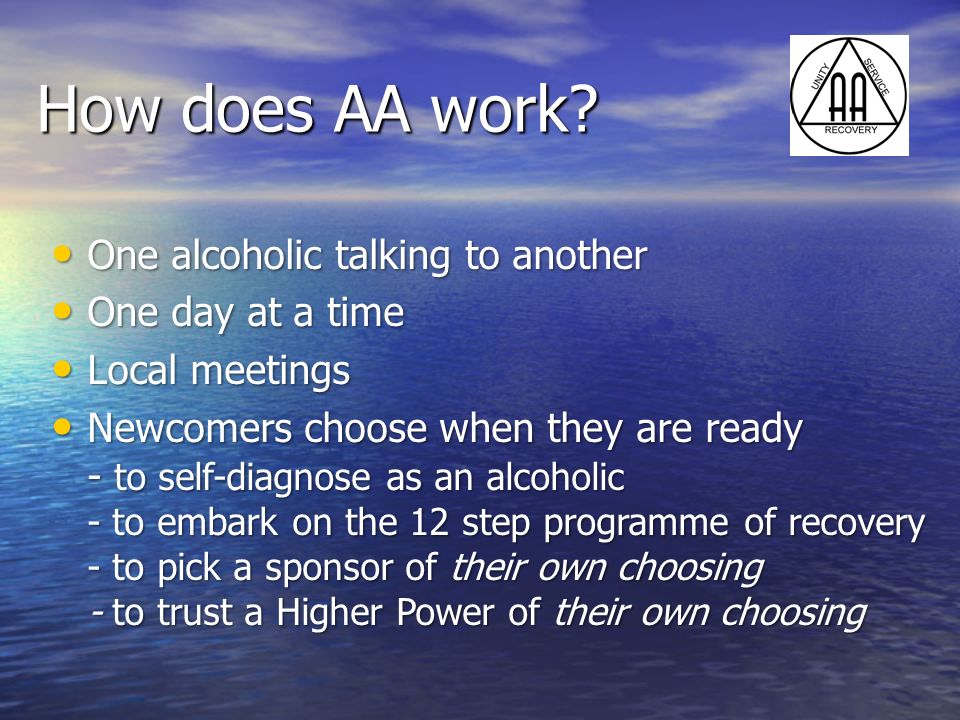 These physical signs may include bloodshot eyes, alcohol on their breath, sleeping more than usual or appearing tired, or an unsteady gait.3
These physical signs may include bloodshot eyes, alcohol on their breath, sleeping more than usual or appearing tired, or an unsteady gait.3
You might also notice behavioral changes if your loved one has a problem with alcohol. For example, they may become frequently angry, belligerent, or moody for no apparent reason. They may appear intoxicated, become less interested in relationships, work activities, schoolwork, or being unable to refuse an offer of alcohol.3
Sometimes, people struggling with alcohol misuse may begin telling lies or being secretive about their whereabouts, alcohol use, and more. You may notice that a person no longer provides consistent stories about their whereabouts, the people they’re with, or what they are doing. These factors alone don’t mean that a person is an alcoholic, but they may certainly be indicative of a problem with alcohol when accompanied by other telltale signs.3
Creating a Plan & What to Say
Now that you’ve learned more about AUDs, you may be able to better understand what your coworker, friend, family member, or other loved one is experiencing. However, you might not be ready for the emotionally taxing part of your conversation. This is where making a plan and writing down your ideas can be helpful.
However, you might not be ready for the emotionally taxing part of your conversation. This is where making a plan and writing down your ideas can be helpful.
Writing down the main points you want to talk about can help you to formulate and remember your ideas during the conversation. Points you may want to consider when writing your conversation plan include:4
- Focus on your concern about your loved one’s drinking. Remember to use “I” statements that express your feelings and your concerns and the ways that you are impacted by your loved one’s alcohol use. You could say, “I am concerned about your alcohol use. I’ve noticed that I’m increasingly worried when you come home late at night and I don’t know where you’ve been.”
- Explain that you’re worried about your loved one’s health. We suggest that you genuinely express your feelings to your loved one by saying something like “I’m concerned that drinking so much every day is harming your health.
 I’ve noticed that you’re sleeping all day on the weekends.”
I’ve noticed that you’re sleeping all day on the weekends.” - Avoid using labels like “alcoholic” or “addict.” Instead, focus on the person and their behavior instead of the label. People who are struggling with alcohol addiction can become upset or defensive when they’re referred to by these labels.
- Be empathic and understanding. Use empathetic, not blaming, statements such as “I know that you’ve been having a hard time at work and you’ve been feeling more pressure,” or “I know that you’re feeling more stressed than usual.”
- Offer options instead of demands. Present options by saying something along the lines of “I was wondering if you would consider seeing a doctor to talk about your alcohol use,” instead of, “You need to get help.” Even though you think it’s obvious that your loved one should seek help, it’s always up to the person to decide what course of action is best for them. You can suggest they seek help, but you can’t force someone to do something they’re not ready to do.

In addition to these considerations, there are some concrete actions you can take before and during confronting the person you know who is struggling with an AUD.
Step 1: Seek Support
Seeking support for yourself through resources or therapy can help you feel like you’re not going through this challenge alone. These resources may provide additional strategies for addressing the person’s alcohol abuse problem and can also help you understand how to best approach your loved one.
There are many ways you can go about this—one idea is to talk to a therapist or mental health or substance abuse specialist to advise you on how to talk to your loved one about their alcohol use. You might consider reading articles, books, or websites, or accessing other free resources on AUDs, too.
Need help from a substance abuse specialist?
Step 2: Engage in Self-Care.
Taking care of yourself is an important thing to remember when you’re concerned for someone you love – yet it’s sometimes one of the first things people push aside. Unfortunately, if you feel burnt out, you’ll be less capable of providing love and support to your loved one.
Unfortunately, if you feel burnt out, you’ll be less capable of providing love and support to your loved one.
Remember to seek your own social support during this stressful time. You could begin counseling or therapy with a mental health professional to discuss and process your feelings. Or, you might consider joining a support group for loved ones of people with alcohol use disorder, such as Al-Anon or SMART Recovery for Friends and Family.
These resources can also help you learn and remember the importance of setting healthy boundaries when dealing with someone with an AUD. Your needs are just as important as anyone else’s, and taking care of yourself doesn’t mean that you’re selfish or that you don’t care about your loved one.
If you love someone with an AUD, you may unknowingly engage in caretaking, rescuing or enabling behaviors. You may experience what is known as codependency, or an unhealthy emotional reliance on your loved one. Talking to others who have been in your position (in a support group, for example) can help you develop healthier strategies to protect your boundaries. This way, you will be less likely to lose touch with your personal needs.5
This way, you will be less likely to lose touch with your personal needs.5
Step 3: Have Treatment Options Ready.
As a part of the planning stage, you’ll need to assemble a list of quick, ready, and accessible treatment options.
If you’re able to say to your loved one, “I’ve done some research and I’ve found these treatment options,” and then present them with a list of readily available resources, they may be more willing to consider treatment. Research viable treatment options online before speaking with your loved one, make calls to treatment centers that appear appropriate for your loved one, and ask them any questions you may have.
Timing is important when it comes to speaking with your loved one about their alcohol use. Your loved one may waver between feeling that they need help for their alcohol use and feeling that they can handle their alcohol use issues on their own. The National Institute on Drug Abuse (NIDA) points out that people who need help for an AUD tend to slip through the cracks if treatment isn’t immediately available or readily accessible to them. The earlier someone with an addiction gets help, the more effective treatment will be.7
The earlier someone with an addiction gets help, the more effective treatment will be.7
Step 4: Participate in Your Loved One’s Treatment.
When your loved one decides to enter treatment, you should plan to be involved. The support of loved ones is an important part of the recovery process. You may be asked to participate in couples or family counseling, or you may be asked to make changes in your behaviors, such as not drinking around your loved one or keeping alcohol out of the house.4
In addition, with the consent of your loved one, you may be asked to help the treatment center with aspects of their treatment plan, assist with setting goals, or participate together in mutual support group meetings.8
Avoiding alcoholic relapse often incorporates family support.
American Addiction Centers’ treatment programs offer monthly family programs and family therapy to ensure that you have the option to be adequately involved in your loved one’s treatment and recovery. Staying involved is key to helping your loved one remain engaged in treatment and committed to their recovery.
Staying involved is key to helping your loved one remain engaged in treatment and committed to their recovery.
Alcohol Treatment & Recovery from Alcohol Use Disorders
No matter how dire your current situation may seem, know that recovery from an AUD is possible.
American Addiction Centers can help you and your loved one find the right rehab for your needs. We have treatment facilities across the nation that offer personalized treatment plans and compassionate, understanding staff who know what your loved one is going through. At our facilities, you may participate in inpatient alcohol abuse rehab, outpatient rehab program, 12 step treatment, and more. If you’re interested in learning more about treatment options or if you have any questions or concerns, call our free, confidential helpline to talk to an admissions navigator any time of day or night.
Find Alcohol Rehab Centers Near You
-
- Sources
- National Institute on Alcohol Abuse and Alcoholism.
 (2020). Understanding alcohol use disorder.
(2020). Understanding alcohol use disorder. - Centers for Disease Control. (2021). Moderate Drinking.
- Drink Aware. (2021). Alcoholism: signs, symptoms and treatment.
- Medline Plus. (2020). Helping a loved one with a drinking problem.
- Mental Health America. Co-dependency.
- National Institute on Drug Abuse. (2019). Treatment Information.
- National Institute on Drug Abuse. (2018). Principles of drug addiction treatment: A research-based guide (third edition): Principles of effective treatment.
- New York State Office of Addiction Services and Supports. Supporting a loved one in recovery.
- National Institute on Alcohol Abuse and Alcoholism.
SAMHSA’s National Helpline | SAMHSA
Your browser is not supported
Switch to Chrome, Edge, Firefox or Safari
Main page content
-
SAMHSA’s National Helpline is a free, confidential, 24/7, 365-day-a-year treatment referral and information service (in English and Spanish) for individuals and families facing mental and/or substance use disorders.
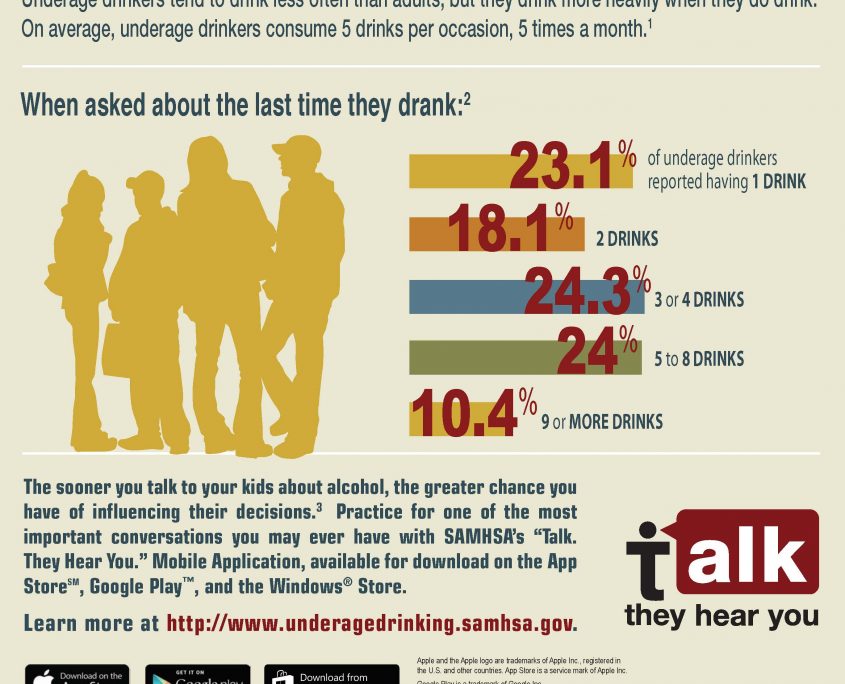
Also visit the online treatment locator.
SAMHSA’s National Helpline, 1-800-662-HELP (4357) (also known as the Treatment Referral Routing Service), or TTY: 1-800-487-4889 is a confidential, free, 24-hour-a-day, 365-day-a-year, information service, in English and Spanish, for individuals and family members facing mental and/or substance use disorders. This service provides referrals to local treatment facilities, support groups, and community-based organizations.
Also visit the online treatment locator, or send your zip code via text message: 435748 (HELP4U) to find help near you. Read more about the HELP4U text messaging service.
The service is open 24/7, 365 days a year.
English and Spanish are available if you select the option to speak with a national representative. Currently, the 435748 (HELP4U) text messaging service is only available in English.
Currently, the 435748 (HELP4U) text messaging service is only available in English.
In 2020, the Helpline received 833,598 calls. This is a 27 percent increase from 2019, when the Helpline received a total of 656,953 calls for the year.
The referral service is free of charge. If you have no insurance or are underinsured, we will refer you to your state office, which is responsible for state-funded treatment programs. In addition, we can often refer you to facilities that charge on a sliding fee scale or accept Medicare or Medicaid. If you have health insurance, you are encouraged to contact your insurer for a list of participating health care providers and facilities.
The service is confidential. We will not ask you for any personal information. We may ask for your zip code or other pertinent geographic information in order to track calls being routed to other offices or to accurately identify the local resources appropriate to your needs.
No, we do not provide counseling. Trained information specialists answer calls, transfer callers to state services or other appropriate intake centers in their states, and connect them with local assistance and support.
-
Suggested Resources
What Is Substance Abuse Treatment? A Booklet for Families
Created for family members of people with alcohol abuse or drug abuse problems. Answers questions about substance abuse, its symptoms, different types of treatment, and recovery. Addresses concerns of children of parents with substance use/abuse problems.It's Not Your Fault (NACoA) (PDF | 12 KB)
Assures teens with parents who abuse alcohol or drugs that, "It's not your fault!" and that they are not alone. Encourages teens to seek emotional support from other adults, school counselors, and youth support groups such as Alateen, and provides a resource list.After an Attempt: A Guide for Taking Care of Your Family Member After Treatment in the Emergency Department
Aids family members in coping with the aftermath of a relative's suicide attempt. Describes the emergency department treatment process, lists questions to ask about follow-up treatment, and describes how to reduce risk and ensure safety at home.
Describes the emergency department treatment process, lists questions to ask about follow-up treatment, and describes how to reduce risk and ensure safety at home.Family Therapy Can Help: For People in Recovery From Mental Illness or Addiction
Explores the role of family therapy in recovery from mental illness or substance abuse. Explains how family therapy sessions are run and who conducts them, describes a typical session, and provides information on its effectiveness in recovery.For additional resources, please visit the SAMHSA Store.
Last Updated: 08/30/2022
Alcoholism as a social problem
Drunkenness and alcoholism in all developed countries invariably rank first among the causes of divorce. According to the World Health Organization, alcoholism in various countries affects from 2 to 10 percent of the population.
It is natural that domestic drunkenness and alcoholism affect marital and family life, family members, the upbringing of children, as well as work and social behavior.
Alcoholism is a typical drug addiction, formed on the basis of the regular use of alcoholic beverages over a number of years. Chronic alcoholism should be distinguished from everyday drunkenness, which is due to situational issues, defects in education, low culture, moral licentiousness. If measures of public influence are sufficient in the fight against domestic drunkenness, then chronic alcoholism, which leads to mental disorders and a number of other diseases, needs medical treatment.
Unfortunately, domestic drunkenness is closely connected with the established customs and traditions in holding any celebrations, holidays, with a low cultural level of recreation and leisure, with the inability of people to occupy themselves.
The special attention that we pay to women's alcoholism is primarily due to the severe consequences for offspring. Maternal alcoholism leads to particularly severe consequences for offspring, which manifest themselves in growth defects, mental and physical development, craniofacial deformities (microcephaly, short and narrow palpebral fissures, underdevelopment of the upper and lower jaws). Anomalies of the joints, congenital heart defects, anomalies of the external genitalia are also possible, in more than half of the cases children suffer from one or another type of neuropsychiatric pathology - mental retardation, mental retardation, neurosis, character pathology, epilepsy, etc.
Anomalies of the joints, congenital heart defects, anomalies of the external genitalia are also possible, in more than half of the cases children suffer from one or another type of neuropsychiatric pathology - mental retardation, mental retardation, neurosis, character pathology, epilepsy, etc.
Another consequence of systematic domestic drunkenness and chronic alcoholism is a sharp decrease in male potency, and even impotence. In intimate relationships on the part of an alcoholic, aggressiveness, cruelty, rudeness are manifested, which causes negative feelings in women and in some cases can lead, as already noted, to the emergence of frigidity.
In a family where one of the parents regularly drinks, there are no conditions for the normal upbringing and development of children. Children and other family members experience an acute sense of shame in front of acquaintances, friends, comrades, neighbors, relatives for a drinking man (woman). As a rule, drunkards and alcoholics commit many antisocial acts (fights, hooliganism, scandals, etc. ).
On the basis of systematic domestic drunkenness and chronic alcoholism, many conditions and circumstances arise that destroy marital life. Therefore, it is by no means accidental that drunkenness and alcoholism in the hierarchy of motives for divorces make up the lion's share and are almost always in the first place.
In adolescence and adolescence, a dysfunctional family environment has a particular influence on the emergence of addiction to alcohol. The following circumstances contributing to youthful alcoholism should be singled out - father's alcoholism, mother's alcoholism and her immoral behavior, loss of father, conflict situation in the family and neglect, pedagogical and social neglect associated with the previous factors.
Children, teenagers and young people are also greatly affected by living conditions in single-parent or broken families.
Naturally, the father and mother are the first and most convincing models of behavior for the child. It is from the inappropriate behavior of parents that defects in the upbringing and moral development of children occur. In most cases, adolescents who systematically or often drink alcohol began to do so in the family, imitating adults and with their permission.
Alcohol abuse by one of the spouses creates an abnormal atmosphere in the family and a constant ground for quarrels, conflicts, scandals. A number of psychotraumatic situations are created for all family members and especially for children. Such an atmosphere adversely affects their psyche and behavior. There is a sharp increase in the risk of neuropsychiatric disorders in children, mothers and other family members, and the likelihood of having children with various deviations and anomalies increases. In families where one of the spouses abuses alcohol, material difficulties appear, the sphere of spiritual interests gradually narrows, and the number of cases of immoral behavior increases. Spouses are more and more moving away from each other.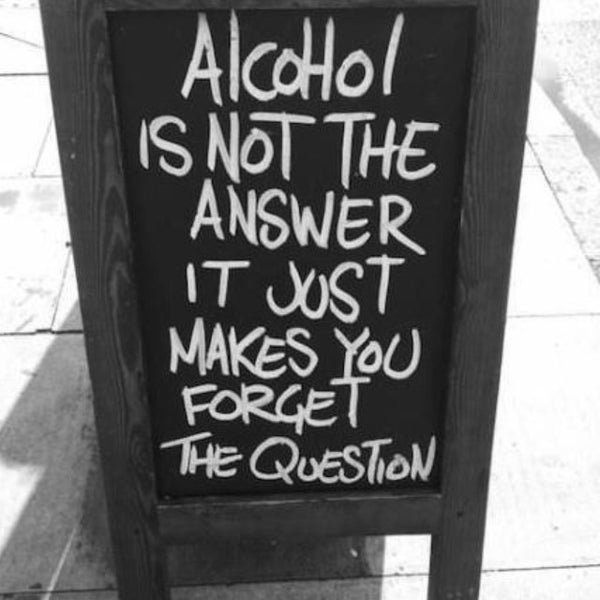 Marriage is subjected to the most difficult test. In such conditions, one of the spouses decides on the last step - divorce.
Marriage is subjected to the most difficult test. In such conditions, one of the spouses decides on the last step - divorce.
Thus, drunkenness and alcoholism traditionally rank first among the motives for divorce in all studies conducted by different authors at different times and in different regions of the country. That is why the fight against this social evil is very important both for strengthening marriage and the family, and for the normal, full-fledged education of the younger generations. All citizens of our society must take part in this struggle.
It is clear that alcoholism as a disease is a social disaster. With a painful addiction to alcohol, a personality is destroyed and a person falls out of an organized society, losing his family, job, social status, becoming the dregs of society. But at the same time, a person degrades, not only losing himself, but also affecting loved ones and others, influencing them, like a dying cell of the body - a cancerous tumor.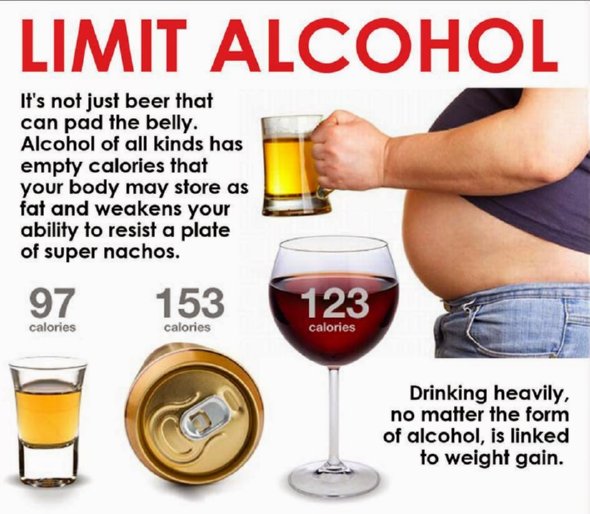 When drunkenness becomes widespread, social foundations are already undermined, and society as a whole, like a ship in a storm, suffers serious damage.
When drunkenness becomes widespread, social foundations are already undermined, and society as a whole, like a ship in a storm, suffers serious damage.
First of all, you need to ask yourself this question: is there or is there no problem of alcoholism in the world?
First, the Russians look at the world community from their position, passing everything through the prism of their national identity.
Secondly, the information on the global Internet has not been sufficiently studied and, therefore, there is little information in Runet about how other peoples drink and how much they drink.
And, thirdly, we must raise our level of national consciousness in order to understand ourselves.
And, of course, there are different opinions on this issue. Judgment is one thing, but Truth is beyond opinion. Our people have always sought to know the Truth. So, the truth about oneself is bitter, but one must know it in order to go into the future. Folk humor sees themselves as jesters at the Easter holiday, bitterly ridiculing vices and, thereby, uprooting them from the soil of popular self-consciousness! People look at the problem of alcoholism from different angles and see it differently, according to their level of consciousness and attitude to alcohol, as well as their life situations, but, nevertheless, the Russian character is something above the individual, group, folk, mass…
Statistical polls, which are given on the pages of Runet, sometimes cause shock, but they still need to be thought through before giving strong arguments about imposing excise taxes on producers of wine and vodka brands in Russia.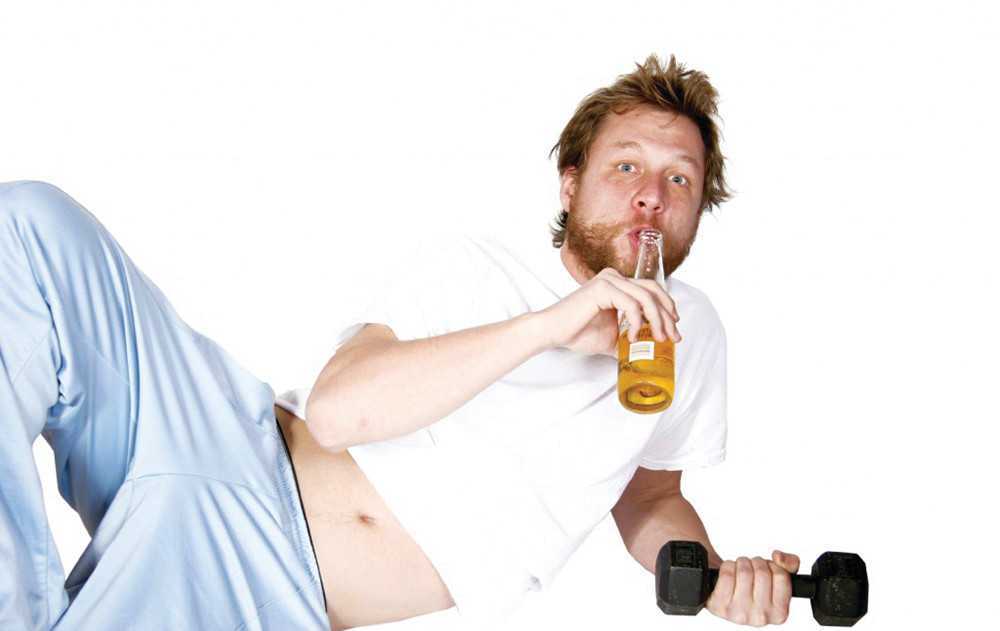 Wine producers and tasters do an important job: they care about the quality of the goods they sell. But the government and the State Duma impose a ban on their activities with their sanctions, and do not at all seek to reduce the general increase in the number of alcoholics among young boys and girls in our country. Domestic policy has not been thought out in relation to alcohol and tobacco in our country and causes dangerous diseases, a decrease in the birth rate and high mortality among the population, not only of mature men and women, but also among young people.
Wine producers and tasters do an important job: they care about the quality of the goods they sell. But the government and the State Duma impose a ban on their activities with their sanctions, and do not at all seek to reduce the general increase in the number of alcoholics among young boys and girls in our country. Domestic policy has not been thought out in relation to alcohol and tobacco in our country and causes dangerous diseases, a decrease in the birth rate and high mortality among the population, not only of mature men and women, but also among young people.
The mortality rate is subject to the laws of relativity depending on the standard of living, education, age, field of activity and other social criteria of the studied audience. But it must be taken into account that the view on these, as well as other problems that concern peoples, was far from the same in different eras. Even at the beginning of the 20th century, the years before the revolution and the October Revolution in the country through the fault of the Bolsheviks, the lower classes drank wine much less than now, and this mass made up a significant percentage of Russians, whose per capita accounted for only 2-4 liters per year wine and refreshing drinks. What can be said now about the scale of the problem, when a person in Russia now accounts for 18 liters of pure alcohol per year?!
What can be said now about the scale of the problem, when a person in Russia now accounts for 18 liters of pure alcohol per year?!
But still, what can serve as a criterion of truth when we ask ourselves what to tell children about drunkards and how it sometimes becomes a family problem? I believe that we can appreciate the depth of the problem by examining the mores of society. And they are clear: if in my youth in the 80s it was not customary to walk down the street with a bottle of gin and tonic and this was already considered the decomposition of the consciousness of a young person, now walking through the city with a bottle of whiskey or brandy is a charm! It is not even important how much alcohol is produced per capita, but what customs the people have. And, most importantly, it should be remembered that the future of the people depends on the education of young people. What habits and customs are introduced into the younger generation, then it leaves an indelible imprint on the entire era of the life of the younger generation and its time.
What do we see when we look at our youth? The bottle has become an indispensable attribute of any holiday, any party and even an evening walk! If earlier in Soviet Russia, where 12 liters of alcohol per capita were consumed per year, the problem of teenage alcoholism was not acute, now young men and women consider it a special charm to walk down the street with a bottle of beer. What will happen next? Perhaps in 20 years the country will sink into a drunken stupor?
Lately, narcologists have been talking more and more about a new problem — rampant teenage alcoholism. According to doctors, more and more representatives of the younger generation fall into alcohol dependence. Distillery sales are growing exponentially and, as it turns out, thanks in large part to the youth. There is a problem of alcoholism associated with the use of beer.
What can be called a social disease that manifests itself as a desire to drink strong drinks? When the younger generation considers a bottle of alcohol to be the norm and an indispensable attribute of a daily walk, then it is already necessary to sound the alarm to those who are responsible for the fate of the people.
“everyone and everywhere” already drink beer. The beer boom may suggest an outbreak of beer alcoholism in a few years, as venerable journalists discuss it in Runet. By drinking a bottle of beer, a person accustoms himself not only to the usual intoxicating effect of alcohol, but also considers this fact to be a “sedative”. Some time passes, and beer becomes already a necessary element of relaxation, tranquility. Doses increase, alcoholic excesses appear, memory lapses occur. Beer becomes a habit and is involved in the biochemical processes of the body. This is how alcoholism is formed.
They drink everything they can. It used to be considered that alcoholism is a disease of the lower social strata. Modern reality proves the opposite: everyone can sleep, from the janitor to the general director. It's just that one does it with vodka, while the other destroys himself with expensive whiskey and tequila.
Today, Russians face a life choice: either drink or not drink at all. Not everyone knows how to drink wisely! It's like the classic - "To be or not to be!"
Not everyone knows how to drink wisely! It's like the classic - "To be or not to be!"
What is the disease of alcoholism? How does it manifest itself? When does alcohol addiction begin?
What can be called the disease of alcoholism, and what can only be called table wine? When does the illness begin? And how can we be sure that a daily glass of wine at lunch or dinner will not cause addiction to alcohol?
Alcoholism is a disease caused by long-term abuse of alcoholic beverages. It is characterized by the formation of first mental, then physical dependence on alcohol.
The danger of alcoholism is that it is not noticeable in the early stages. It is difficult to distinguish alcoholism from "non-alcoholism" objectively in the early stages. The main difference is subjective. Only the second stage of alcoholism becomes noticeable “by eye”, when the same hangover-withdrawal syndrome, or, in other words, Zhislin's syndrome, appears. And this stage already speaks of the formation of pharmacological dependence on alcohol.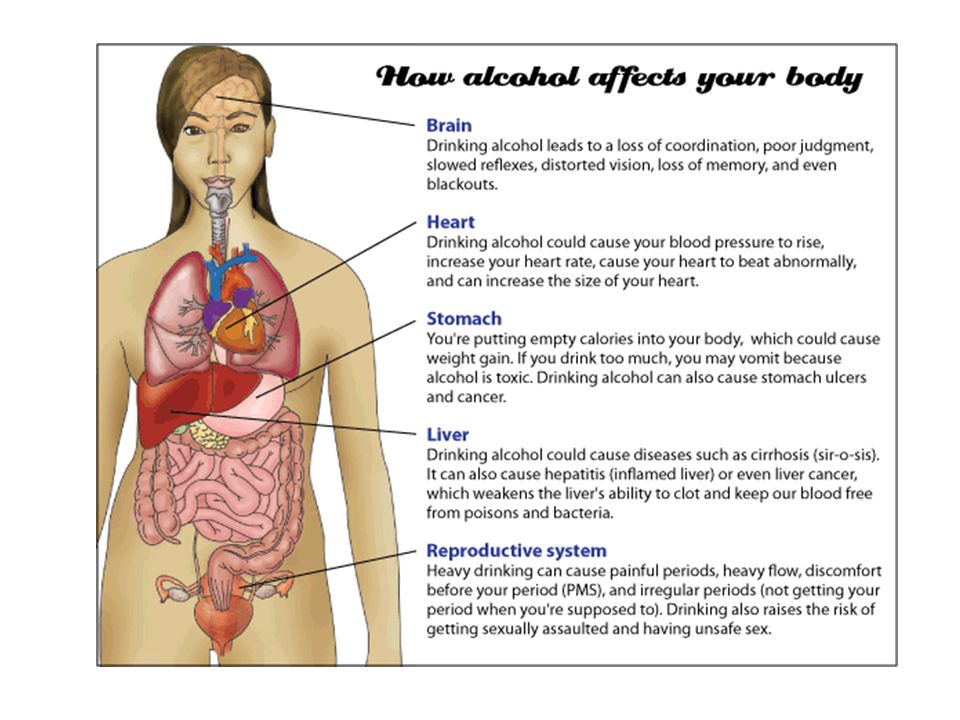
According to experts, the risk of developing chronic alcoholism depends:
- on individual characteristics. Young people, children of alcoholics, women, people who use alcohol in search of relief to relieve emotional tension and stress are at greater risk.
- by age. The sooner alcohol abuse begins, the sooner addiction to it is formed.
- from the amount of alcohol consumed. The World Health Organization has proposed a table for assessing the risk of developing chronic alcoholism, depending on the amount of alcohol consumed. The calculation in the table is carried out in arbitrary units, which correspond to:
- 1 c.u. = 200ml beer,
- 1 conv. = 100 ml of wine,
- 1 conv. = 50 ml of spirits.
High risk of developing alcohol dependence in men taking 17-28 units. per week and in women taking 11-17 units. in Week. It is extremely dangerous to take more than 28 units/week for men and more than 17 units/week for women.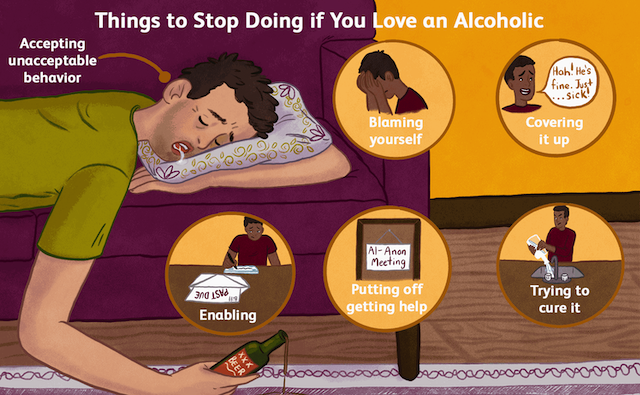
Also, the abuse of beer can cause beer alcoholism. The need to drink beer does not cause such anxiety in a person as the need for vodka. But beer alcoholism is formed even faster than vodka. When drinking beer, it is quickly absorbed into the body, overflowing the bloodstream. With a large amount of alcohol consumed, varicose veins occur, the heart expands. Radiologists call this phenomenon "beer heart" syndrome. If you abuse beer, then the heart "sags", becomes flabby, and its "live motor" functions are lost forever.
In response to the intake of beer in the male body, a pathological substance begins to be released (in particular, in the liver), which suppresses the production of the main male sex hormone methyltestosterone. As a result, female sex hormones begin to be produced: the pelvis becomes wider, the mammary glands grow.
And for women, the use of alcohol and vodka is even more harmful than for men. So, a couple of years after the start of drinking, in proportion to the beer drunk, the likelihood of developing breast cancer increases. It is dangerous to drink beer to a mother who is breastfeeding. The baby is likely to experience epileptic seizures, and over time, the newborn may experience epilepsy.
It is dangerous to drink beer to a mother who is breastfeeding. The baby is likely to experience epileptic seizures, and over time, the newborn may experience epilepsy.
In large quantities, beer is a poison for cells, so its abuse has severe somatic consequences: myocarditis, dystrophy, liver cirrhosis, hepatitis. With beer alcoholization, brain cells are more severely affected than with vodka, so intelligence is more quickly impaired, severe psychopathic changes are detected.
When drinking alcoholic products, first of all, it is necessary to raise the question: for what purpose do you drink? To appreciate the bouquet of wine, to highlight the taste of the dish being eaten, or to feel the euphoria and “lightness” of the drink? And as soon as the gastronomic function of alcohol ends for a person and its pharmacological action becomes important, this is the beginning of alcohol addiction.
Yes, there are gourmets who drink wine as an accompaniment to this or that dish.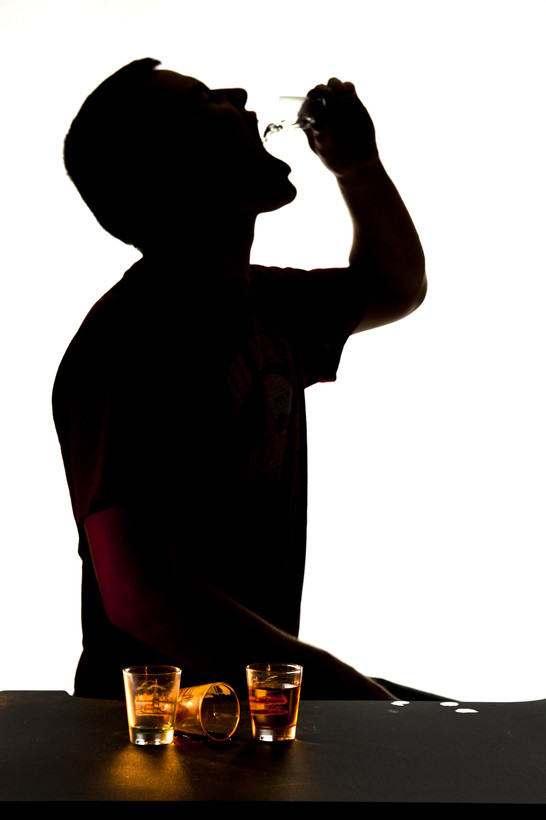 And if this wine is drunk purely for gastronomic purposes, a person has no desire to gradually increase the dose: for he, in fact, seeks to avoid even a light alcoholic “hit”, regarding it only as an annoying artifact when drinking wine. But when wine is drunk precisely for the sake of this “hit”, even if it is light and to some extent “stimulating”, then there is a very serious chance that such stimulation will eventually turn into an alcoholic disease. In fact, the feeling of "light fun in the head" after taking a certain dose of alcohol is the first sign of alcohol poisoning.
And if this wine is drunk purely for gastronomic purposes, a person has no desire to gradually increase the dose: for he, in fact, seeks to avoid even a light alcoholic “hit”, regarding it only as an annoying artifact when drinking wine. But when wine is drunk precisely for the sake of this “hit”, even if it is light and to some extent “stimulating”, then there is a very serious chance that such stimulation will eventually turn into an alcoholic disease. In fact, the feeling of "light fun in the head" after taking a certain dose of alcohol is the first sign of alcohol poisoning.
A number of physical disorders are associated with alcohol use, such as cirrhosis of the liver, certain types of cancer, hypertension, stroke, and congenital anomalies. The constant presence of alcohol in the body due to its periodic intake is responsible for severe physical and mental disorders, cirrhosis (degeneration) of the liver and encephalopathy, in which the functions of the liver, brain and, most importantly, the heart are seriously affected.
How much can you drink to get drunk? Here you need to introduce the concept of "tolerance" - stability, or alcohol tolerance. Tolerance is defined as the maximum allowable dose after which a person survives - but this is with doctors. In everyday terms, tolerance is the amount of alcohol that a person can drink and not get drunk. Moreover, the higher the tolerance (the greater this number), the more likely the presence of alcohol dependence. You can often see how seasoned men at the table, sipping vodka with glasses, laugh at a young man who gets tipsy after a glass of wine: "Oh, you don't know how to drink!" But in fact, they brag about their illness: the young man, fortunately, does not yet have a high tolerance for alcohol, and the thoroughly alcoholized bumpkins have become inveterate alcohol addicts.
Why do people get drunk?
Alcohol causes euphoria (ethyl alcohol, ethanol). This is a chemical that depresses the central nervous system, which gradually impairs brain function.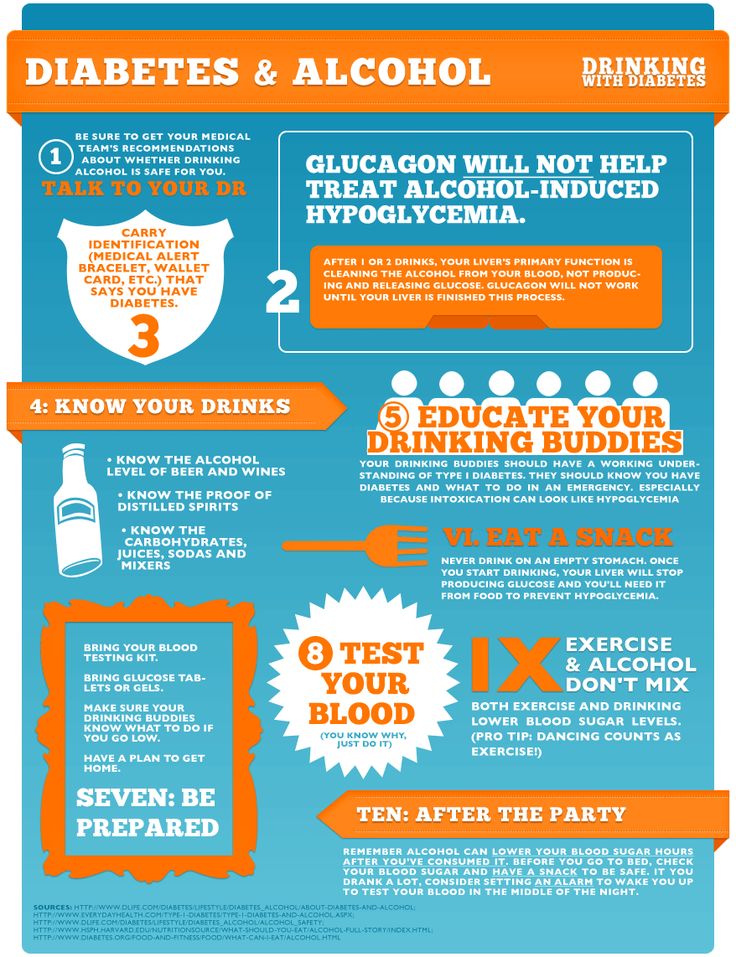 After drinking alcohol, a state of euphoria, relaxation and loss of self-control immediately occurs. The concentration of alcohol, for example, in vodka means that 40% of what is drunk is ethyl alcohol (vodka 40 gr.).
After drinking alcohol, a state of euphoria, relaxation and loss of self-control immediately occurs. The concentration of alcohol, for example, in vodka means that 40% of what is drunk is ethyl alcohol (vodka 40 gr.).
Is there any benefit from alcohol?
The Scythian sage Anacharsis says:
"At home, the first glass is drunk for health, the second - for pleasure, the third - for impudence, and the last - for madness."
Nearly 100 years ago, in 1909, the State Duma of the Russian Empire issued the following amazing call: "No need for social reforms, destroy only alcohol!" Sounds unreasonable and frivolous, doesn't it? One might as well call for the destruction of weapons in order to eradicate crime and war, for the abolition of market circulation of coins and paper money in order to counteract human greed. However, behind this slogan is one of the important stages of the war that the Russian people have been waging for many years, and which today, at the beginning of the 21st century, has risen to our very throat.
The use of alcohol in itself - unlike cocaine and even tobacco - is not a sin, not a misfortune or a disease. Wine, according to the Psalmist, brings joy to a person. The Apostle Paul recommends it as a healing agent. The first miracle of the Savior was the transformation of water into wine, and His last testament left us the Sacrament of the Holy Eucharist.
Sin, misfortune and sickness come from where the abuse begins - that is, the use for evil. It is not always possible to pinpoint the exact line of abuse (it is one thing, say, to sit at a table at home, and another to drive a truck), but it is clear that such a line exists.
People argue about the benefits and harms of alcohol as long as viticulture and winemaking exist. Doctors and nutritionists put forward one theory after another: some say - not a drop, others - it is possible and even necessary.
Hippocrates, the forefather of modern medicine, put wine treatment on a scientific basis.
“Wine is a thing surprisingly appropriate for a person, both in health and in ailments.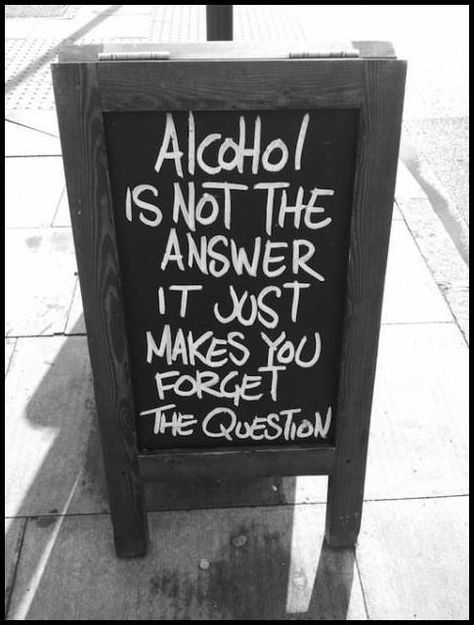 It is prescribed as needed and in certain quantities in accordance with the individual physique, ”wrote the great physician. But at the same time he warned:0003
It is prescribed as needed and in certain quantities in accordance with the individual physique, ”wrote the great physician. But at the same time he warned:0003
“Many things are healing only if they are used in a timely manner. Wine, given to the sick in time, serves as medicine. And, on the contrary, drunk inappropriately, it can cause violence, fever, and, therefore, turn not into a medicine, but into the cause of the disease.
When scientists and nutritionists talk about preventive drinking, they mean only healthy people. Recommendations to skip a glass or two (but no more) of good light wine at dinner apply only to those who do not have a bad heredity. If your grandfather, father or someone close loved to “lay behind the collar”, then you need to refrain from constant drinking of alcohol.
Wine therapy should only be started in cases where it is not contraindicated in a treatment prescribed for another reason. During pregnancy and lactation, the intake of alcoholic beverages, even the lightest (including beer), is strictly prohibited.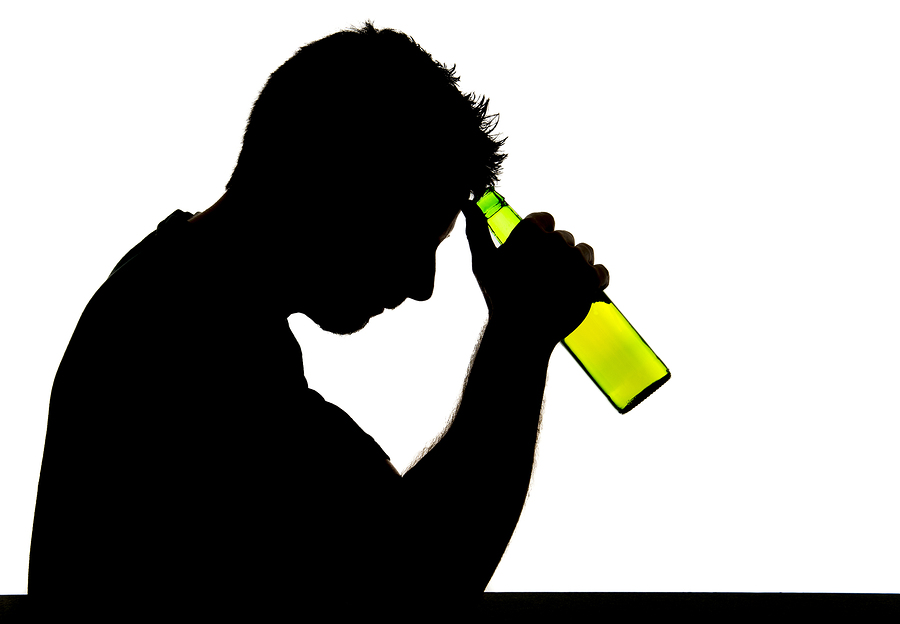 "Conceiving in a drunken stupor" can lead to the birth of a handicapped child. It has been proven that alcohol causes irreparable harm to the embryo.
"Conceiving in a drunken stupor" can lead to the birth of a handicapped child. It has been proven that alcohol causes irreparable harm to the embryo.
Athletes who have great physical activity should also completely abandon the use of alcohol, since it does not have the best effect on the muscular system, internal organ system and consciousness, worsening the achievement of sports results and lowering the level of world Olympic records in our country. In professional sports, even the smallest doses of alcohol drunk on the eve of the competition lead to disastrous results, but this is enough to break the world record for “alcohol consumption per capita” in Russia in the style of a la France, Gemany and Italian.
Overcoming such detrimental phenomena as drunkenness and alcoholism is one of the global challenges facing humanity. According to the World Health Organization, alcohol abuse is the third leading cause of death (after cardiovascular disease and cancer).
In 2004, 2.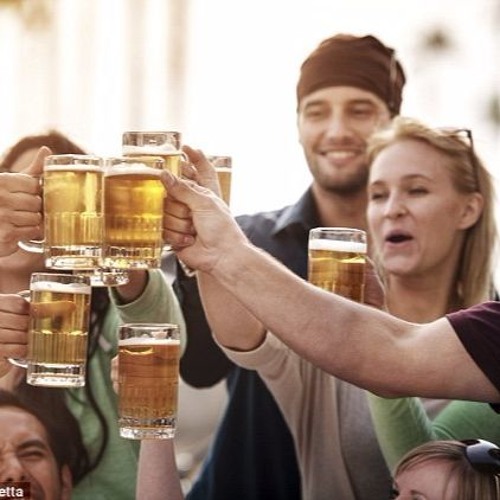 5 million people died from alcohol-related causes worldwide. Drinkers live an average of 15 years less than non-drinkers. Drunk people commit almost 40% of all crimes, they are frequent culprits of road accidents.
5 million people died from alcohol-related causes worldwide. Drinkers live an average of 15 years less than non-drinkers. Drunk people commit almost 40% of all crimes, they are frequent culprits of road accidents.
Unfortunately, the Republic of Belarus belongs to the group of countries with a high level of alcohol consumption. The problems of drunkenness and alcoholism, as well as the harm caused by this harmful phenomenon, are very relevant for us.
Thus, according to the National Statistical Committee of the Republic of Belarus, the volume of sales of all types of alcoholic beverages increased in 1995-2009. from 6.7 to 12 liters per capita. The amount of alcohol per each inhabitant of the country is actually even higher, taking into account the illegal circulation of part of the alcohol-containing products.
The World Health Organization defines a critical level of alcohol consumption - 8 liters in terms of absolute alcohol for every inhabitant of the country aged 15 and over.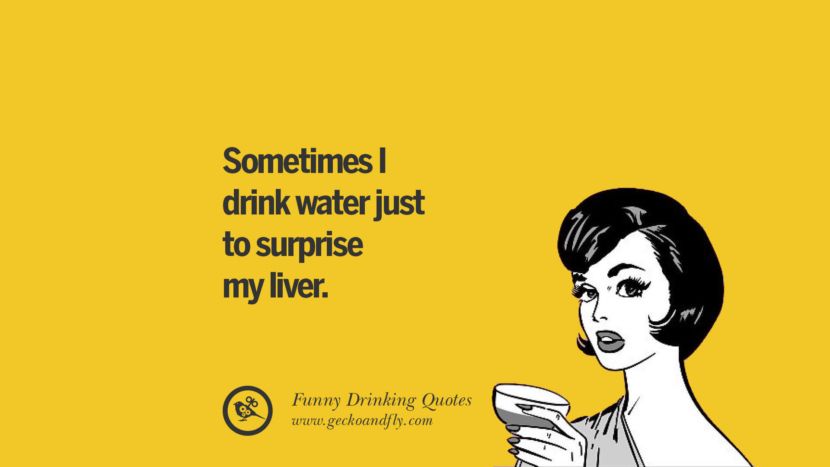 If this line is exceeded, a gradual degradation of the nation occurs in demographic, social, economic and cultural terms, the state of its health and the gene pool deteriorate significantly.
If this line is exceeded, a gradual degradation of the nation occurs in demographic, social, economic and cultural terms, the state of its health and the gene pool deteriorate significantly.
Analysis of real statistical data for 1970 - 2006 carried out by Belarusian scientists. showed that an increase in the volume of alcohol sales by 1 liter is accompanied by an increase in the level of general mortality by 2.6%, cardiovascular mortality - by 3.1%, mortality from liver cirrhosis - by 6.1%, pancreatitis - by 6.2% , acute alcohol poisoning - by 11.1%, alcoholism and alcoholic psychosis - by 18%, mortality due to injuries and accidents - by 6.2%, homicide rate - by 4.8%.
According to the National Statistical Committee of the Republic of Belarus, a 5.5% increase in alcohol sales in 2008 was accompanied by a 6.8% increase in the number of deaths from accidental alcohol poisoning. And with a decrease in the sale of alcoholic beverages in 2009 by 3.3%, the number of deaths from accidental alcohol poisoning decreased by 7. 2%. However, according to the same official statistics, deaths from alcohol-related causes other than accidental poisoning increased by 7.7% last year.
2%. However, according to the same official statistics, deaths from alcohol-related causes other than accidental poisoning increased by 7.7% last year.
Non-specialists usually do not know all the details of the chemical and psychological processes of the influence of alcohol on the human body, but everyone should know about its extremely harmful effect on almost all human organs.
Alcohol, or ethyl alcohol, is a narcotic poison that acts on the cells of the human body, paralyzing and destroying them. Scientists have proven that 100 g of vodka destroys 7.5 thousand actively working brain cells. A dose of 7 - 8 g of pure alcohol per 1 kg of body is fatal for humans.
Even small amounts of alcohol depress areas of the brain that control inhibition, a person loses control over his actions. At a very high level of alcohol in the blood, the normal functioning of the area of the brain that controls breathing is disrupted - death can occur due to respiratory arrest.
Systematic alcohol consumption leads to persistent dilation of blood vessels, directly damaging the heart muscle. The kidneys stop excreting harmful waste products from the body.
The kidneys stop excreting harmful waste products from the body.
The organ most damaged by alcohol abuse is the liver. It processes about 95% of the alcohol that enters the bloodstream. As a result, fatty compounds are deposited in the liver, which leads to its obesity and the replacement of functioning liver cells with non-functioning scar tissue - liver cirrhosis. Alcoholic cirrhosis is the leading cause of alcohol-related death.
It has long been established that heavy drinkers often get sick. Alcohol affects the immune system, damaging its defense mechanism. Finally, one of the most negative consequences of alcohol abuse is that under its influence, a set of chemical and physiological changes occur in the brain, leading to the establishment of persistent alcohol dependence. Alcohol is included in the metabolic processes of the body. All this gives grounds to consider alcoholism as a serious illness, with which "sick" people are often unable to cope on their own.
You can find various data on the extent of alcohol consumption in our republic. All of them indicate that the majority of the adult population of the country consumes alcohol to one degree or another, and a very significant part of people have a harmful addiction to it.
All of them indicate that the majority of the adult population of the country consumes alcohol to one degree or another, and a very significant part of people have a harmful addiction to it.
So, conducted by the Institute of Sociology of the National Academy of Sciences of Belarus in 2005 and 2007. Republican sociological studies have shown that 74 - 77% of the adult population drink certain alcoholic beverages at least occasionally and, accordingly, only 23 - 26% lead an absolutely sober lifestyle.
According to surveys, various types of domestic drunkenness are widespread among 19-20% of citizens of working age and some younger than working age. Of these: "episodic drunkenness" (rarely or often and a lot - more than one bottle of wine or 0.5 bottles of vodka) was noted in 7 - 9% of the respondents, "habitual drinking" (very often - 3 - 4 times a week - or almost daily, but a little) - in 8 - 11%, "systematic drunkenness" (very often or almost daily and a lot) - 2%.
The prevalence of domestic drunkenness among the population is one of the most significant factors in the development of alcoholism. The level of alcoholization of society is judged primarily by the number of persons registered in drug treatment institutions. An extremely negative symptom in our country is a significant increase in the number of registered patients with alcoholism. From 19For 1996, their number has grown annually by 3-5%, and in 2009 it exceeded 180,000 people.
The level of alcoholization of society is judged primarily by the number of persons registered in drug treatment institutions. An extremely negative symptom in our country is a significant increase in the number of registered patients with alcoholism. From 19For 1996, their number has grown annually by 3-5%, and in 2009 it exceeded 180,000 people.
But this is not yet a complete picture of the alcoholization of society. According to medical experts, the real number of people suffering from alcoholism, but not identified and not registered, is 4-5 times higher than the number officially registered. Thus, not a few percent, but a very significant part of our citizens are addicted to alcoholic beverages in a painful form.
And it is extremely unfortunate that 17.3 thousand people out of 181.5 thousand registered with narcology, that is, almost a tenth, are minors. In recent years, the so-called beer alcoholism has gained significant momentum among the youth. This is by no means a harmless thing. The fact is that due to the low concentration of alcohol in beer, it is drunk in larger quantities than vodka or wine. Therefore, alcoholism due to the use of beer develops 3-4 times faster than from strong alcoholic beverages.
The fact is that due to the low concentration of alcohol in beer, it is drunk in larger quantities than vodka or wine. Therefore, alcoholism due to the use of beer develops 3-4 times faster than from strong alcoholic beverages.
It is important to know and remember: if a young person drinks 3-4 times a month, this is already an abuse, and a very serious one. A so-called psychological dependence appears when a teenager becomes interested not just in drinking in a company, but tries to solve some of his problems with the help of alcohol. The worst thing is if he begins to like the very state of intoxication.
What to do?
Alcoholism is not just a sin that destroys a person as a person. Its consequences are fraught with incalculable evil both for the family and relatives of an alcoholic, and for society as a whole. A dependent person, even if his awareness and will have already awakened, falls into a trap: the body has an irresistible craving for alcohol, the consumption of which has become a psychophysiological need. Therefore, for the treatment of an alcohol-dependent person, in some cases, it is not enough to take such actions as withdrawal from hard drinking, attempts to stop drinking. The formed dependence on alcohol is so strong that even when a person does not drink, he is, as doctors say, in a state of remission. It is enough to take even a little alcohol - and the disease returns, despite the abstinence from drinking alcohol for many months or even years.
Therefore, for the treatment of an alcohol-dependent person, in some cases, it is not enough to take such actions as withdrawal from hard drinking, attempts to stop drinking. The formed dependence on alcohol is so strong that even when a person does not drink, he is, as doctors say, in a state of remission. It is enough to take even a little alcohol - and the disease returns, despite the abstinence from drinking alcohol for many months or even years.
At the root of the problem lies the spiritual dependence of man. Therefore, the fight against this social evil should be carried out not only and even not so much by physical methods, but by spiritual weapons.
Think about it: more than 37% of criminal offenses in Belarus are committed while intoxicated.
As you know, every crime is inevitably followed by punishment. However, it is hardly necessary to see in correctional labor institutions (ITU) a panacea capable of insuring society from those who have broken the law, and even more so helping them to embark on the path of correction.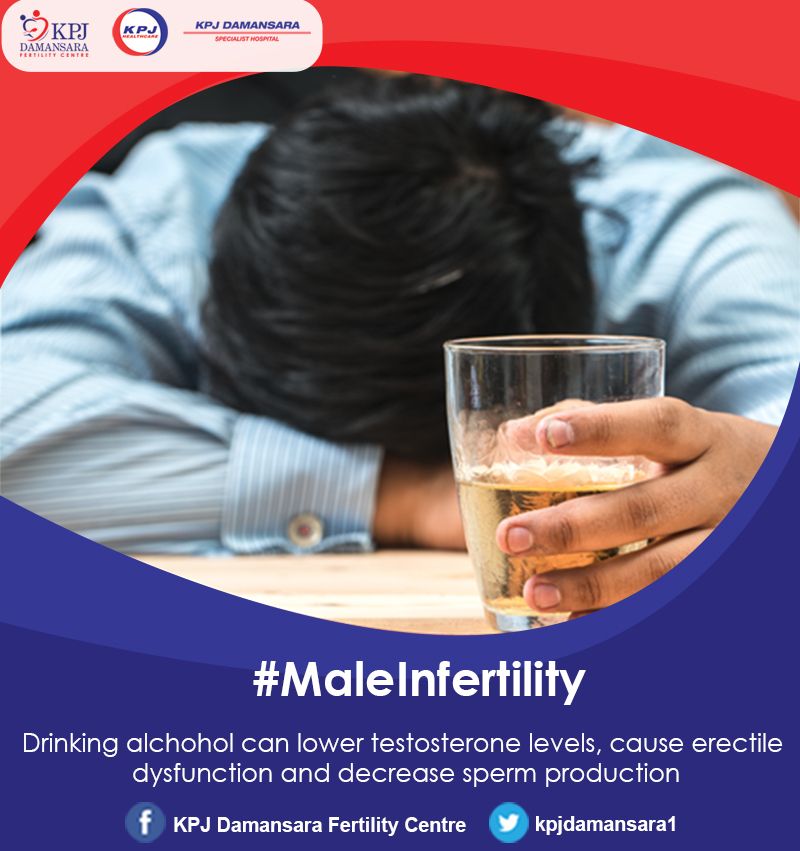 As life has shown, those who have served their sentences leave the ITU even more embittered, bitter, having gained considerable criminal experience. This is first. Secondly, their cruelty is aggravated by excessive alcohol consumption; thirdly, having been released, a person cannot adapt to the difficult realities of life, find his place in society and, as a result, falls into drunkenness and commits new crimes.
As life has shown, those who have served their sentences leave the ITU even more embittered, bitter, having gained considerable criminal experience. This is first. Secondly, their cruelty is aggravated by excessive alcohol consumption; thirdly, having been released, a person cannot adapt to the difficult realities of life, find his place in society and, as a result, falls into drunkenness and commits new crimes.
So, a vicious circle? Is there a way out of it? There is! He is in the awareness of the will of God, the holy biblical commandment: "Thou shalt not kill"! The Creator Himself speaks to human hearts, whether it be a judge pronouncing a death sentence on a criminal, or a convict who encroached on someone else's life. And there is no alternative to this commandment!
Head of the Psychoneurological Dispensary Olizar I.N.
Valeologist Rudenya E.N.
Alcoholism and its prevention - OGBUZ Bratsk City Hospital No. 2
Alcoholism is a dangerous disease associated with physical and mental cravings for alcohol. Numerous examples of alcohol degradation of the population surround any person, regardless of the characteristics of the living environment.
Numerous examples of alcohol degradation of the population surround any person, regardless of the characteristics of the living environment.
The main component of any alcoholic beverages ETHANOL is a poison, a neurotoxin that depresses the nervous system.
Alcohol intoxication - a short-term effect on the nervous system. There are 3 degrees of intoxication:
Light - the drunk person experiences a slight increase in strength, criticism of his own actions decreases, movements become less accurate;
Medium - uncoordinated muscle movements, mental disorders begin, attention is scattered, speech becomes slurred, pain and temperature sensitivity is significantly reduced.
Severe - motor retardation and impairment of consciousness; the drunk is not able to understand what is happening around and what others are saying. Involuntary urination and defecation are possible. Often the memory is "turned off". Possible weakening of respiratory and cardiac activity. A coma may develop, a fatal outcome is possible.
A coma may develop, a fatal outcome is possible.
The causes of alcoholism include:
- destruction of the family institution;
- household abuse of alcoholism;
- media propaganda:
- loss of normal life orientations;
- value disorientation of youth;
- lack of normal leisure;
- drinking in the family leads to the emergence of interest in alcohol in children.
Consequences of alcoholism are horrendous:
Destruction of the family, crippled destinies, disabled children, increased criminogenic situation in the kidney of drunkenness and more.
Alcoholism is especially dangerous in old age.
As a disease, alcoholism can begin much faster than in youth, occur with smaller amounts of alcohol consumed and less regularity. This is due to an age-related decrease in the water content in the body, which is necessary for dissolving alcohol, with a weakening of the liver, and hence with greater alcohol intoxication at the same doses. In older people, the cause of alcohol abuse is often the so-called senile depression, in which alcohol acts as a means of self-medication.
In older people, the cause of alcohol abuse is often the so-called senile depression, in which alcohol acts as a means of self-medication.
Alcohol abuse is one of the leading causes of accidental falls in the elderly, severe injuries and deaths.
Drinking alcohol in the elderly can cause painless myocardial infarction, heart failure, arterial hypertension. Alcohol abuse is the cause of arrhythmias.
Alcohol exacerbates osteoporosis characteristic of older people, significantly increases the frequency of fractures of the spine, femoral neck, which usually confine people to bed for the rest of their lives.
Regular alcohol consumption increases the risk of urinary and fecal incontinence and increases the risk of dementia (dementia) in the elderly. In 10% of patients with senile dementia, alcoholic brain damage was detected.
Chronic alcoholism in old age leads to memory loss.
Alcoholic delirium ("delirium tremens") in the elderly and senile age, as a rule, is fatal.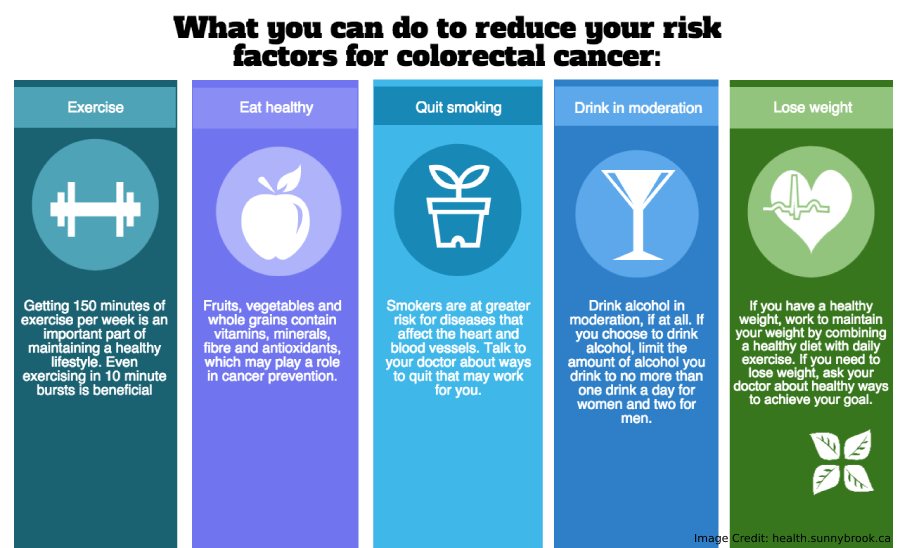
Almost half of people over 60 suffer from insomnia, and alcohol abuse exacerbates this condition.
About a third of all suicides among older people are attributed to alcohol abuse.
How to get rid of alcohol abuse?
If you do not have signs of alcoholism, that is, an irresistible dependence on alcohol, but you drink alcohol often and in large quantities, make a decision to reduce the amount of alcohol and reasons for drinking do not let the situation get out of control if you care about your family and your health.
Tips for those who decide to cut alcohol consumption drastically:
- avoid companies where it is customary to drink a lot.
- always try to control the amount of alcohol you drink.
- Feel free to refuse if offered a drink.
Learn to relax in other (non-alcoholic) ways: by doing sports or any other pleasant activity. If you are seriously concerned about anxiety and insomnia, seek the advice of a psychotherapist.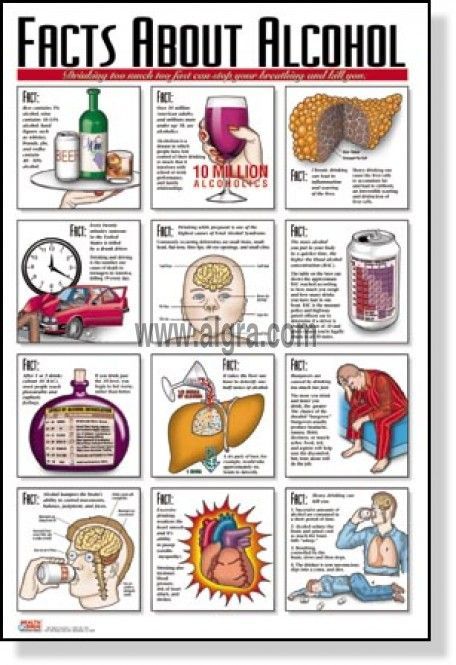
If you or someone close to you develops alcoholism, psychological and physical dependence on alcohol, signs of a hangover, consult a narcologist.
Without the help of a doctor, it will be difficult for you to cope with the disease. For the treatment of alcoholism, it may be necessary to go to the hospital for a while, and then be observed by a doctor in a clinic. There are special medicines, various methods of treatment without the use of drugs. Remember: to cope with this serious illness, you need modern methods of treatment and an active desire of the patient to get rid of the disease!
Prevention of alcoholism
There are three stages of prevention:
Primary prevention aims to prevent the onset of alcoholism. Such events are usually aimed at telling about the harmful effects of alcohol. It must be remembered that "a little bit" does not count. Usually the craving for alcohol is not limited to beer: cocktails, wine, liqueurs, vodka, cognac - do not wait long for their turn.
